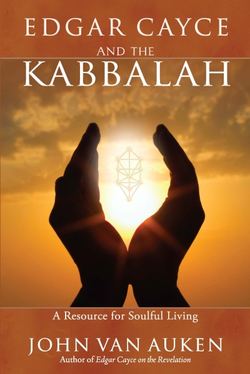Читать книгу Edgar Cayce and the Kabbalah - John Van Auken - Страница 10
На сайте Литреса книга снята с продажи.
Reincarnation
ОглавлениеIt may not be widely known, but the reincarnation of souls is not only an Edgar Cayce concept, it is also a Kabbalistic teaching (gilgul neshamot, meaning “cycles of the soul”). Much of the unseen influences in life are from our souls’ many experiences before this life.
Kabbalah teaches that the destiny of every soul is to return to the source whence it came. Those who have not developed the purity and perfection necessary for gaining access to their heavenly source must undergo incarnation in a subsequent body and even repeat that experience more than once before they are permitted to return to the celestial region in a purified form.
This idea of correcting one’s condition by trying again is expressed in Plotinus’s often quoted lines in The Enneads, I.6.9:
Withdraw into yourself and look. And if you do not find yourself beautiful yet, act as does the creator of a statue that is to be made beautiful: he cuts away here, he smoothes there, he makes this line lighter, this other purer, until a lovely face has grown his work. So do you also: cut away all that is excessive, straighten all that is crooked, bring light to all that is overcast, labor to make all one glow or beauty and never cease chiseling your statue, until there shall shine out on you from it the godlike splendor of virtue, until you see the perfect goodness surely established in the stainless shrine.
Kabbalah uses the term cycle (gilgul) for reincarnation. However, there is another type of reincarnation. It involves receiving a new (higher) soul during one’s lifetime, that is, a new soul comes into a person’s heart while he or she is still incarnate. This is called ibbur (pregnancy or incubation), because it is like gestation or pregnancy. The incarnate person becomes “pregnant” with this new soul while he or she is still alive. This is an explanation of how some people go through dynamic changes in their perception and character. They undergo a change of mind, a change of lifestyle, and thereby ascend to the next spiritual level. They are now hosting a “new” soul—or, more accurately, a higher part of their own soul. This is what occurs when a person is ready to advance in soul evolution. This is why the soul has five parts, each higher than the other. This is not possession by a different soul, not a “walk-in,” in the sense that some write about today, though some may confuse ibbur to be such. It is more aligned with being “born anew,” as Jesus explained to Nicodemus (much more on this in chapter 3.)
